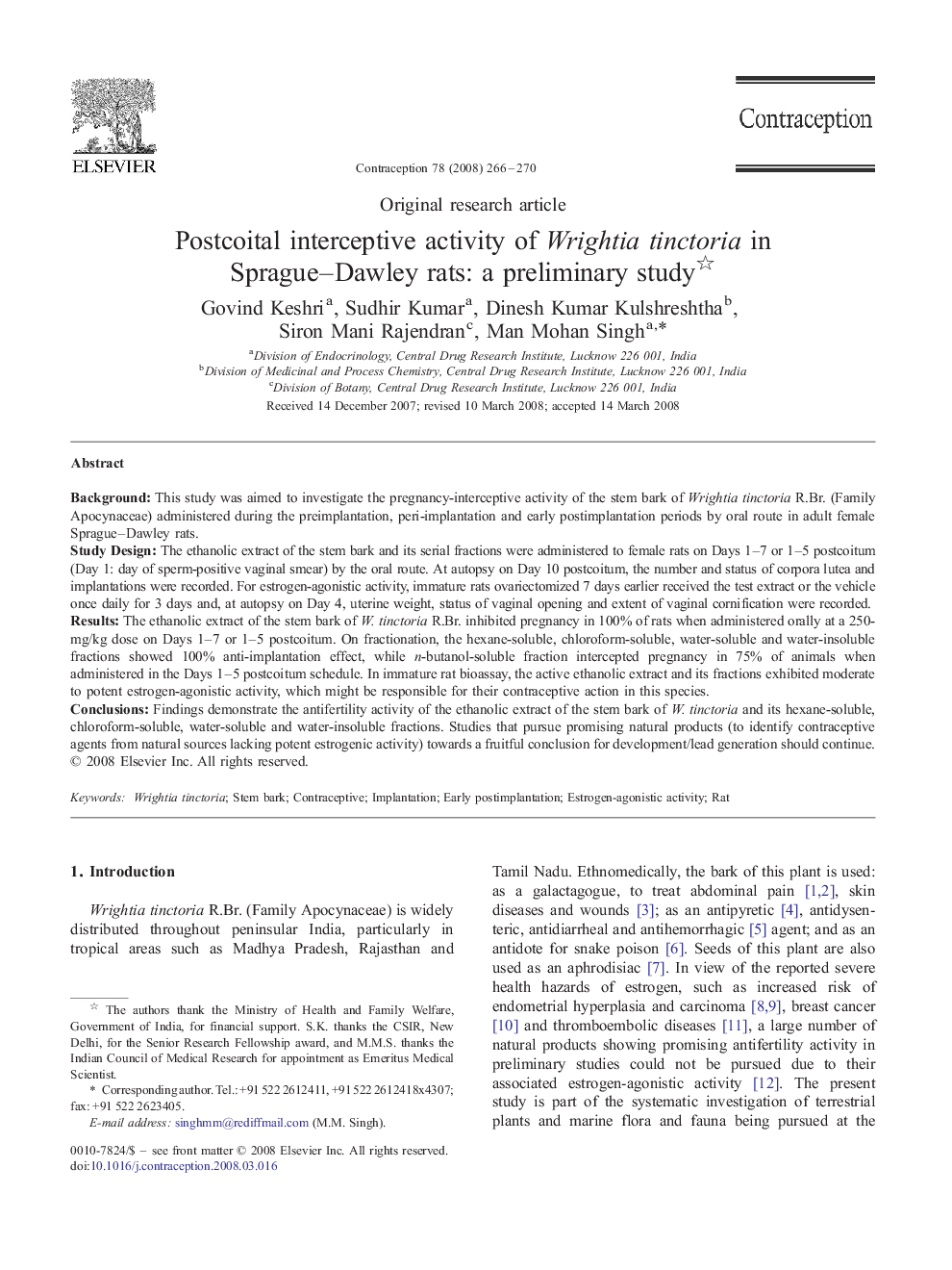| کد مقاله | کد نشریه | سال انتشار | مقاله انگلیسی | نسخه تمام متن |
|---|---|---|---|---|
| 3915539 | 1251512 | 2008 | 5 صفحه PDF | دانلود رایگان |

BackgroundThis study was aimed to investigate the pregnancy-interceptive activity of the stem bark of Wrightia tinctoria R.Br. (Family Apocynaceae) administered during the preimplantation, peri-implantation and early postimplantation periods by oral route in adult female Sprague–Dawley rats.Study DesignThe ethanolic extract of the stem bark and its serial fractions were administered to female rats on Days 1–7 or 1–5 postcoitum (Day 1: day of sperm-positive vaginal smear) by the oral route. At autopsy on Day 10 postcoitum, the number and status of corpora lutea and implantations were recorded. For estrogen-agonistic activity, immature rats ovariectomized 7 days earlier received the test extract or the vehicle once daily for 3 days and, at autopsy on Day 4, uterine weight, status of vaginal opening and extent of vaginal cornification were recorded.ResultsThe ethanolic extract of the stem bark of W. tinctoria R.Br. inhibited pregnancy in 100% of rats when administered orally at a 250-mg/kg dose on Days 1–7 or 1–5 postcoitum. On fractionation, the hexane-soluble, chloroform-soluble, water-soluble and water-insoluble fractions showed 100% anti-implantation effect, while n-butanol-soluble fraction intercepted pregnancy in 75% of animals when administered in the Days 1–5 postcoitum schedule. In immature rat bioassay, the active ethanolic extract and its fractions exhibited moderate to potent estrogen-agonistic activity, which might be responsible for their contraceptive action in this species.ConclusionsFindings demonstrate the antifertility activity of the ethanolic extract of the stem bark of W. tinctoria and its hexane-soluble, chloroform-soluble, water-soluble and water-insoluble fractions. Studies that pursue promising natural products (to identify contraceptive agents from natural sources lacking potent estrogenic activity) towards a fruitful conclusion for development/lead generation should continue.
Journal: Contraception - Volume 78, Issue 3, September 2008, Pages 266–270